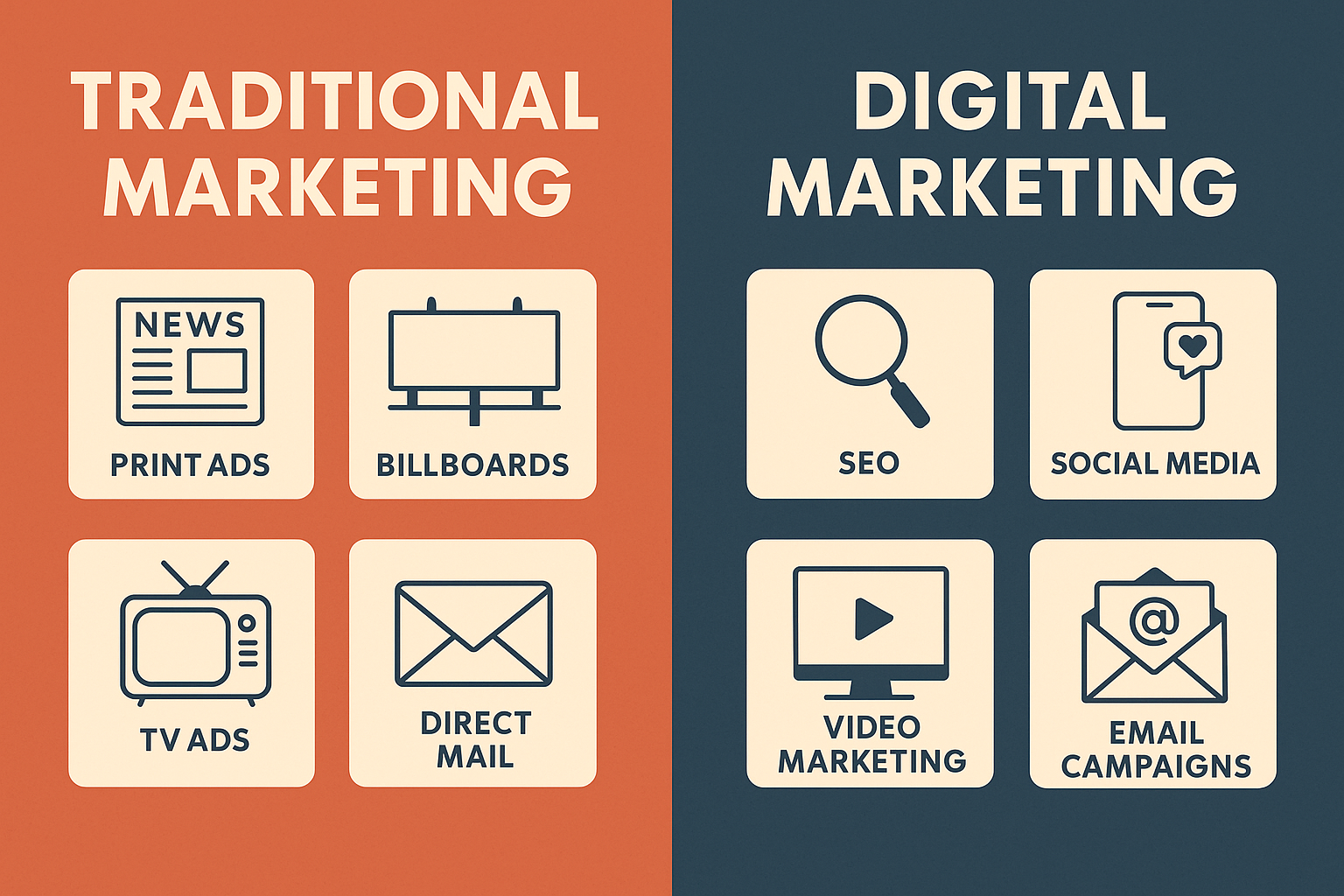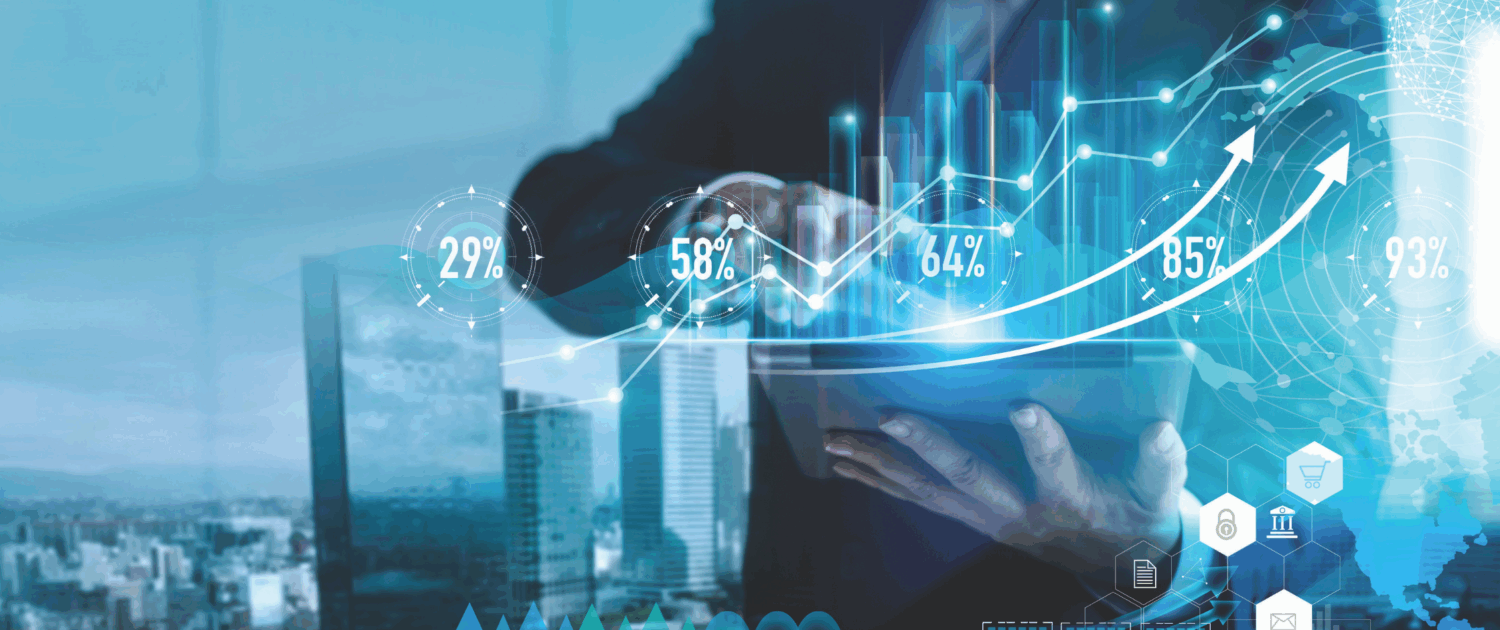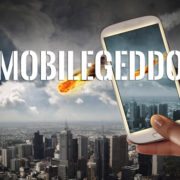The ROI Showdown: Traditional Marketing vs. Digital Advertising
In an era driven by data, hyper-personalization, and real-time results, the marketing world has never been more focused on ROI. Businesses of all sizes are reevaluating their strategies, weighing the legacy of traditional marketing against the agility and precision of digital advertising. But which channel truly delivers better return on investment in 2025?
In this blog, we’ll break down the strengths and weaknesses of each, compare the numbers, and help you decide which path delivers the results your business needs.
Defining the Two: Traditional vs. Digital Marketing
Traditional Marketing: Includes TV, radio, print ads, direct mail, and outdoor advertising (billboards, signage).
Digital Marketing: Includes SEO, SEvO, PPC (pay-per-click ads), social media advertising, content marketing, email campaigns, and influencer partnerships.
ROI Comparison: Traditional vs. Digital
| Factor | Traditional Marketing | Digital Marketing |
| Cost | High (TV, print, radio ad buys) | Flexible (ads can start at $5) |
| Targeting | Broad, geographic/demographic | Hyper-targeted (interests, behavior) |
| Tracking | Limited | Real-time metrics and dashboards |
| Engagement | One-way communication | Two-way, interactive |
| Personalization | Low | High |
| Adjustability | Difficult mid-campaign | Instant, even hourly changes |
| Measurable ROI | Estimations and reach-based | Direct attribution via analytics |
Why Digital Dominates in 2025
- Data-Driven Decision Making: Digital marketing platforms like Google Ads and Meta Ads provide transparent, real-time performance data. You can instantly see which ad creative is working and where to allocate the budget.
- Cost Efficiency: You don’t need a six-figure budget to make an impact online. Small businesses can target niche audiences with a few hundred dollars and potentially generate measurable results.
- Scalability: Digital campaigns are easily scalable. Once you find a formula that works, you can increase spend or duplicate success across platforms.
- Consumer Behavior: Consumers now spend more time online than ever. Mobile-first habits, voice search, and social commerce mean attention is fragmented across digital touchpoints, where traditional ads simply can’t reach.
Where Traditional Still Has Value
Despite the rise of digital, traditional marketing can still play a role:
- Brand Awareness: Large-scale campaigns (like a Super Bowl ad or local billboard blitz) are effective for mass visibility.
- Credibility: Printed materials or local radio ads may feel more “legitimate” to older demographics.
- Event-Based Marketing: Flyers or signage are great for in-person events or brick-and-mortar store traffic.
But without digital support, traditional efforts can lack trackability and fail to deliver long-term value.
Blended Strategy: The Best of Both Worlds? Not So Much.
Some industries (like the financial webinar industry) prefer to try a hybrid strategy of:
- Pair a direct mail postcard with a scannable QR code
- Use billboard ads to drive social engagement
- Supplement local radio with geotargeted Facebook Ads
But all that glitters is not gold.
While a blended marketing strategy that combines traditional tactics, (like mailers, seminars, and radio) with digital channels may seem like a smart, multi-touch approach, it can be a tough way to achieve a strong ROI – especially in the financial industry. Traditional methods are notoriously expensive and often difficult to track. Postcard mailers can cost upwards of $1 – $2 per piece once you factor in printing and postage, and seminars often come with venue, catering, and promotional costs that quickly add up. Even with clever integrations like QR codes or geo-targeted digital follow-ups, these campaigns require a significant upfront investment and often yield inconsistent returns. Without the data precision and cost-efficiency of a digital-only campaign, it’s easy for financial advisors to burn through budgets chasing cold leads.
Check out our Financial Industry Case Study here.
Case Study: Local Retailer Shifts Budget, Sees 3X ROI
Background
A Midwest-based independent retailer had historically invested in local newspaper ads, radio spots, and printed coupons to promote seasonal sales. While this drove some in-store traffic, the business struggled to measure impact or adjust messaging mid-campaign.
The Shift
In 2024, they partnered with a digital marketing agency to transition to a digital-first strategy. The campaign included:
- Geo-targeted Google Ads
- Facebook and Instagram retargeting
- An email marketing campaign with abandoned cart automation
- A conversion-optimized landing page for seasonal promotions
Results (Over 90 Days):
| Metric | Traditional Campaigns (2023) | Digital Campaigns (2024) |
| Estimated ROI | 1.4x | 4.2x |
| New Customer Acquisition Cost | $68 | $24 |
| Measurable Conversions | Limited | 1,321 |
| Campaign Adjustments | None (static) | Weekly optimization |
| Revenue from Campaign | $13,500 | $40,000+ |
Takeaway:
By reallocating just 60% of their traditional budget into targeted digital channels, the retailer tripled their ROI and gained real-time performance insights – something impossible with their old media mix.
Conclusion: Go Where the ROI Is
In 2025, the data is clear: digital marketing offers more control, more insight, and more measurable ROI than traditional methods. While traditional tactics still have their place, especially in brand awareness campaigns, modern marketers must prioritize digital if they want to drive growth.
The marketing landscape isn’t an either-or scenario. It’s about making smarter investments based on your goals, audience, and resources. Understanding the ROI of every channel helps your brand grow with intention, not guesswork. Embrace the tools of today, test fearlessly, and let data guide your path forward.
Ready to Maximize ROI?
At Onimod Global, we help brands of all sizes launch, optimize, and scale digital marketing campaigns that deliver real results. Let’s talk strategy and start making every dollar count.
Contact us today at onimodglobal.com to get started.
FAQs
Q1: Is traditional marketing completely obsolete in 2025?
Not at all. Traditional marketing can still be valuable for mass awareness and offline engagement, especially when paired with digital strategies.
Q2: Which digital channel has the best ROI?
It depends on your audience and goals, but PPC and email marketing often offer the highest ROI due to their targeting and cost efficiency.
Q3: Can small businesses afford digital marketing?
Absolutely. With flexible budgets and targeted reach, digital marketing is often more accessible and effective than traditional methods for SMBs.
Q4: How can I measure ROI in digital marketing?
Use tools like Google Analytics, Meta Business Suite, or HubSpot to track conversions, engagement, and customer journeys.
Q5: Should I invest in both traditional and digital marketing?
A blended approach can work well if it’s strategic, but is generally not recommended due to its historically low ROI. Use traditional for broad exposure and digital for engagement, personalization, and conversions.












